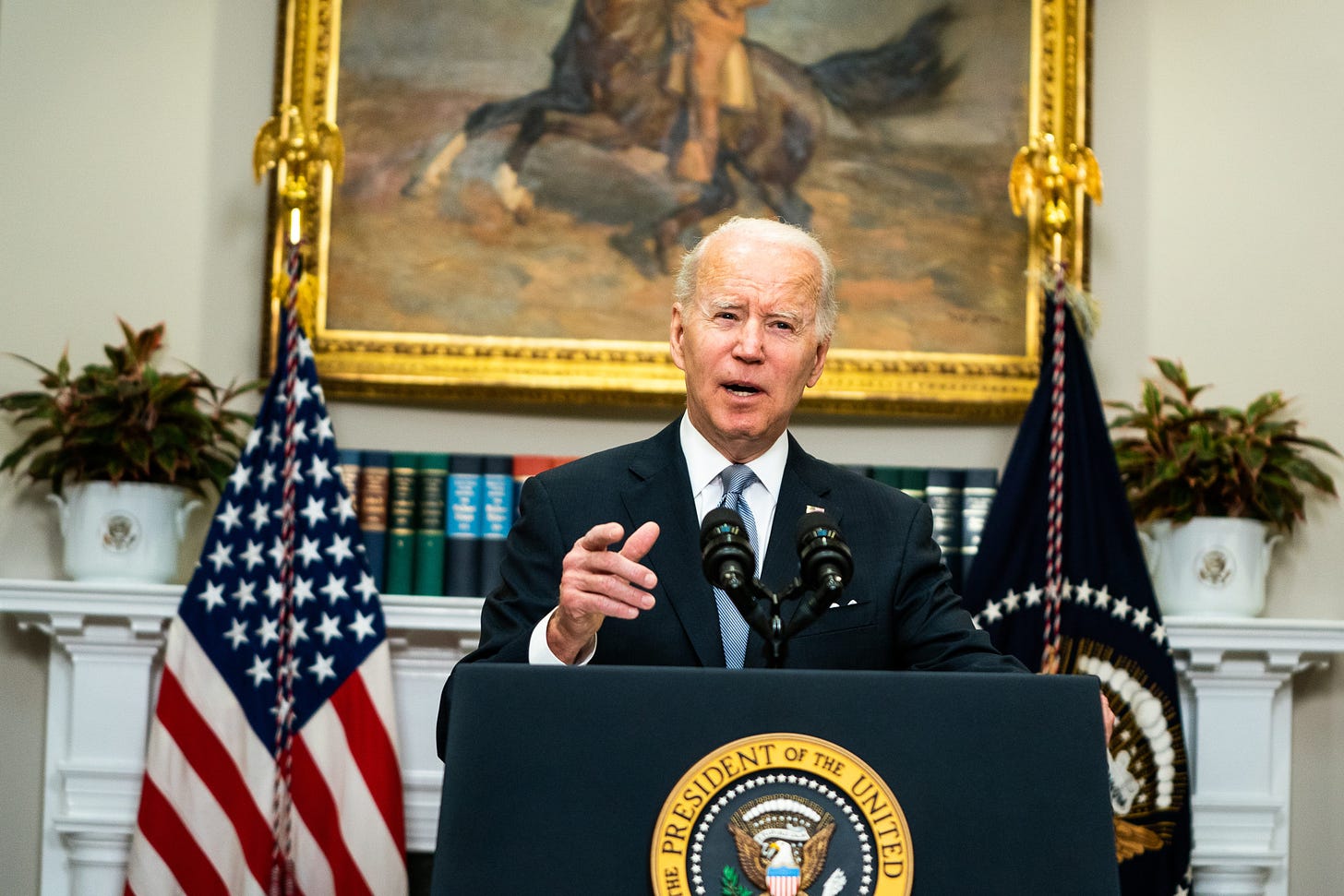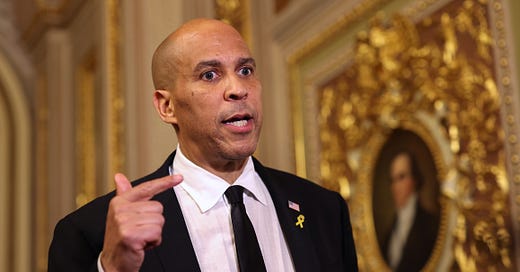Biden Has Two Thirds of a Russia Policy
They’ve identified the problem and set an objective, now they just need a solution.

Secretary of Defense Lloyd Austin commented last week that the U.S. objective in Ukraine is to “see Russia weakened to the degree that it can't do the kinds of things that it has done in invading Ukraine.” This was the first time a senior administration official had enunciated a realistic objective in Russo-American relations. Until the beginning of the war, the administration’s goal was “strategic stability.” But given that the administration never had a plan to achieve this, it was less of a policy than a wish.
In the first weeks of his administration, Joe Biden labeled Vladimir Putin a “killer,” but in the first year of his presidency, he seemed more intent on ignoring Putin than confronting him. It appears that inside the administration, Secretary of State Antony Blinken’s assessment that Russia remained a dangerous power was overruled in favor of the arguments made by senior political appointees in Pentagon and Jake Sullivan, the president’s assistant for national security affairs, who wanted to table Russia policy to focus on China. When asked about his top three priorities, Secretary of the Air Force Frank Kendall responded, “China, China, and China.” The joint statement released after the April 2021 summit between Biden and Putin emphasized strategic stability, and Biden expressed his wish for a “stable, predictable relationship with Russia”— with the implication that with Russia behaving itself, the United States could focus on China. Even after the Russian offensive against Ukraine began in February, the administration only stated vague positions such as “ensuring that Ukraine can defend itself.”
It’s often said that the first step to solving a problem is accepting that you have one, and Austin’s remark does that. Assuming the rest of the administration agrees with the Secretary of Defense’s stated goal, it has finally conceded that Russia is a hostile actor capable of causing major harm to the United States and its allies. That admission goes against the instincts of many in Europe and the United States, including some of Austin’s own subordinates, who would like to see a quick resolution to the war so they can move on to other things, be it resumption of trade with Russia and ending the flow of refugees into their countries or focusing again on China.
It might seem counterintuitive to recognize Russian power just as its army, navy, and air force are being embarrassed by their smaller neighbor, but Austin is right to do so. Russia’s failure is a result of a series of faulty political assumptions about how Ukraine, NATO, and the European Union would respond to the invasion. Russia is also yet to harness its full war-making capacity. An anticipated declaration of war will allow the full mobilization of the country and give more power to the Russian military to prosecute the war with greater resources. (Both of these could also turn out to become domestic liabilities for Putin.) The problem with the Russian military, largely, seems not to be the quality of its weapons but the men operating them. And, so far at least, Russia has successfully used the world’s largest nuclear arsenal to deter outside intervention.
On non-military matters, Russia remains a headache. This war has caused a rift between America and several of its partners. The United States is struggling to isolate Russia from Hungary, a NATO ally, as well as from India, Israel, and several neighbors in the Americas. So not only is Russia militarily capable of causing immense grief, suffering, and instability, but its supposed diplomatic isolation has been greatly exaggerated.
The Biden administration has therefore successfully accomplished two of the first three steps of formulating a strategy. Having identified the problem and decided on a goal, it must now figure out how to use the resources at its disposal—diplomatic, intelligence, military, and economic—to achieve its goal.
The most expedient way to weaken Russia after the war will largely depend on how Russia looks at that time. Accomplishing Austin’s goal of diminishing Russia’s capacity for aggression until it no longer poses a threat to its neighbors will be much easier if Ukraine receives all the aid, arms, and ammunition it asks for during the war and the diplomatic and economic isolation of Russia grows.
But the administration’s strategy can’t stop when the fighting in Ukraine ends. Even if Ukraine routs the Russian military, Russia will still pose a threat to its smaller neighbors, including NATO members. And even in the unlikely outcome that Russia is so diminished that not even the Baltic states feel threatened, the reduction of the Russian threat must be maintained, to borrow from George Kennan, “to promote tendencies which must eventually find their outlet in . . . the gradual mellowing of [Russian] power.” Otherwise Russia will lick its wounds, learn its lessons, rearm, and return. We have seen nothing so far to indicate that Putin’s thirst for war and desire to eradicate free societies have diminished.
Maintaining follow-through for its policy after the war in Ukraine is over will test the administration, and Biden in particular. It will be incumbent upon him to ignore those who will implore him once again to deemphasize or even placate Russia and return to the China-only policy. He will have to win support from Congress, including for levels of defense spending far greater than what he has requested so far. He will have to devote more of his presidency than he likely imagined to maintaining the strength and cohesion of NATO. And the administration, in coordination with Congress, must restore the so-called political warfare capabilities to diminish Putin’s support within the government and among the Russian people. Biden’s is a task made easier only by the absence of alternatives—he simply has to do it.









